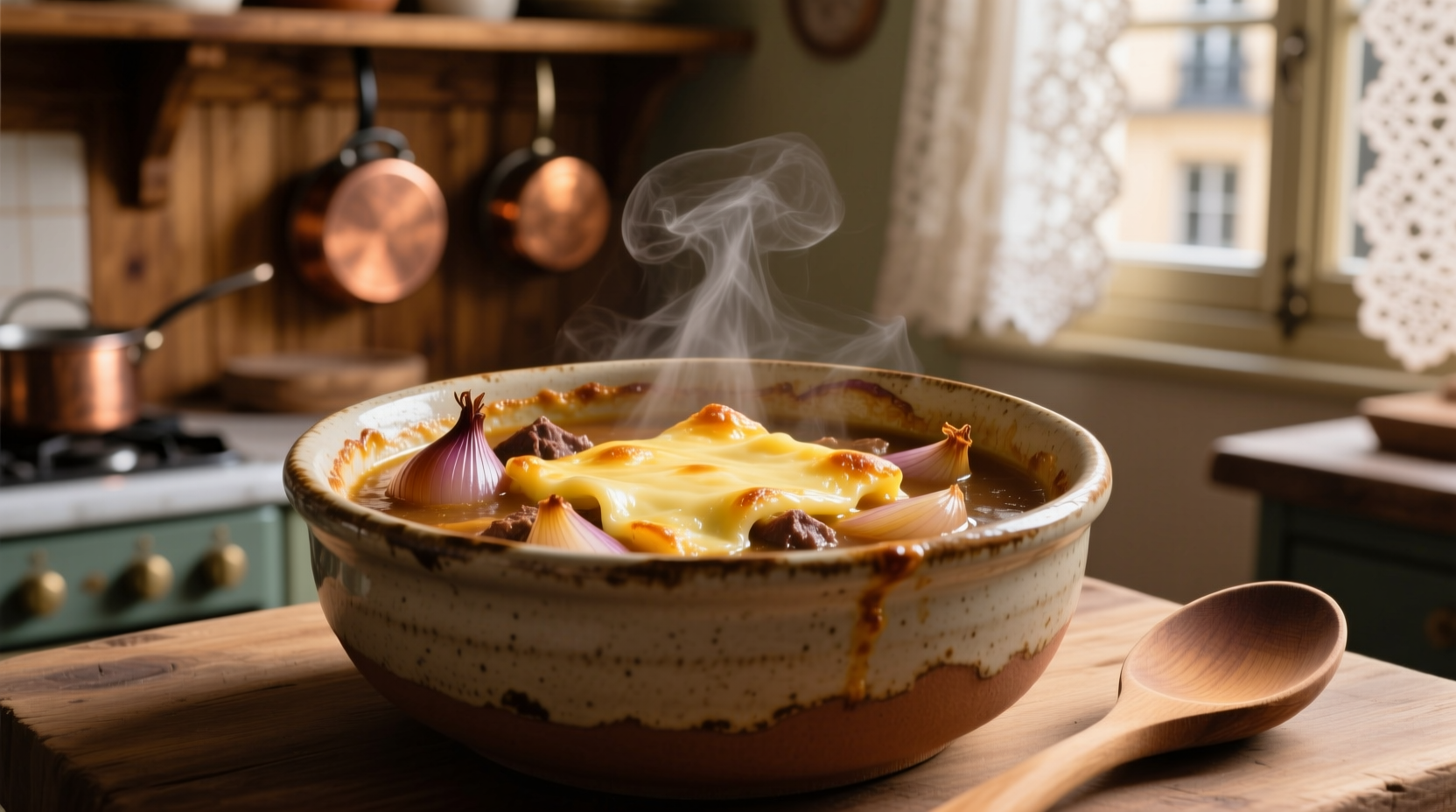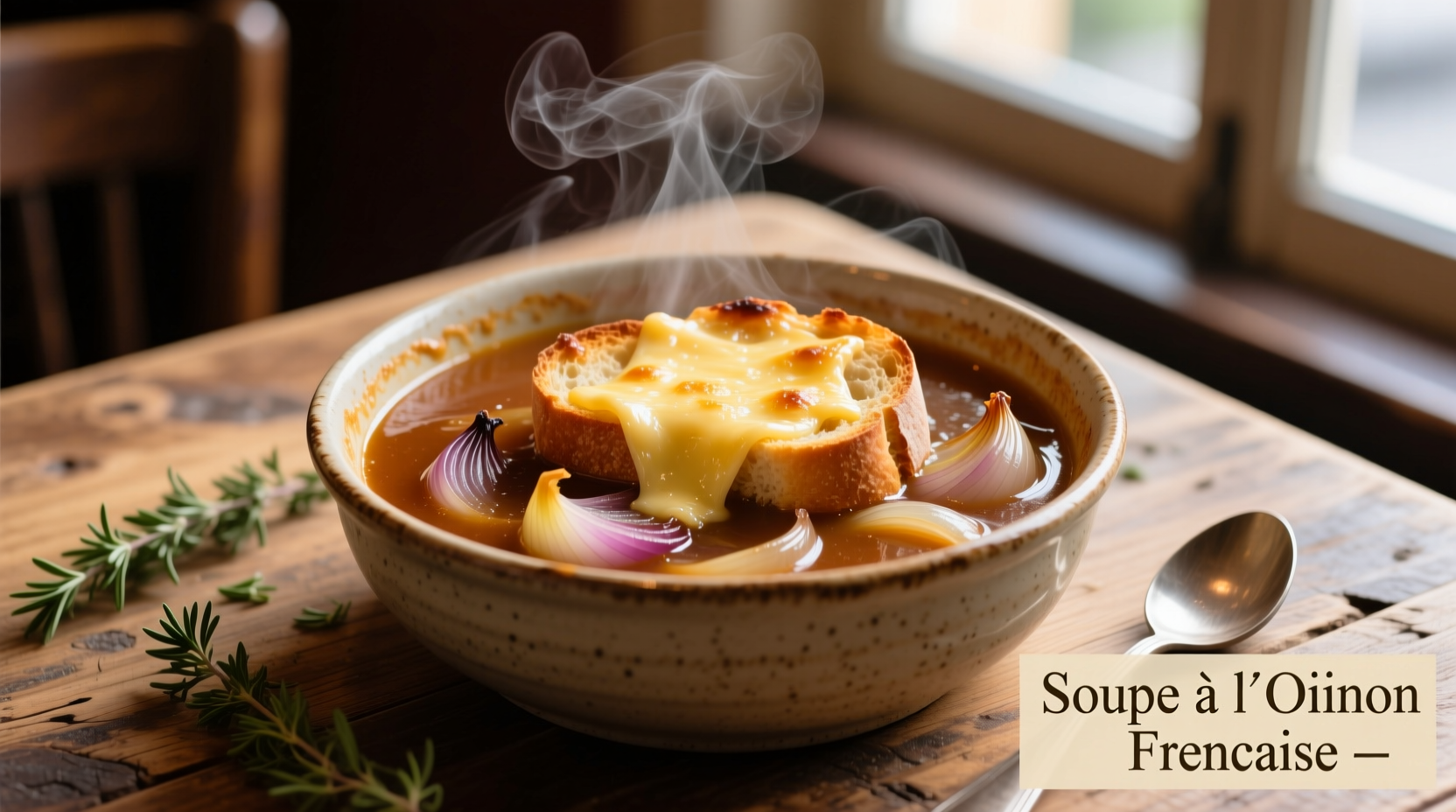Discover exactly what makes authentic French onion soup stand apart from imitations. Whether you're a home cook seeking traditional preparation methods or simply curious about this beloved French classic, understanding the precise ingredients and their roles transforms how you experience this culinary treasure. We'll explore not just what goes into proper French onion soup, but why each component matters for achieving that perfect balance of sweet caramelized onions and rich, savory broth.
The Essential French Onion Soup Ingredients
Authentic French onion soup relies on quality ingredients working in harmony. Unlike simplified versions found in many restaurants today, the traditional preparation honors specific components that create its distinctive flavor profile. Let's examine each element that defines this classic dish.
Onions: The Heart of the Dish
Yellow onions form the foundation of genuine French onion soup. Chefs typically use 2-3 pounds of onions per serving, slowly caramelized over 45-60 minutes until they achieve deep golden-brown color without burning. This slow transformation converts the onions' natural sugars into complex flavor compounds that define the soup's character.
While some modern variations use sweet onions like Vidalia for quicker preparation, traditional French chefs insist on yellow onions for their balanced sweetness and robust flavor. The caramelization process—often called "sweating" in French culinary terms—is non-negotiable for authentic taste.
Broth: The Flavor Carrier
Traditional French onion soup uses rich beef broth as its liquid base. Authentic recipes call for homemade beef stock simmered with marrow bones for 6-8 hours, creating a deeply flavorful foundation that complements the caramelized onions.
According to Centre National des Arts et Métiers, French culinary archives show that 19th century Parisian bistros developed this soup as a way to utilize leftover bread and bones from butcher shops. The beef broth provides essential umami that balances the onions' sweetness.
| Broth Type | Authenticity Level | Flavor Impact |
|---|---|---|
| Homemade beef bone broth | ★★★★★ | Deep umami, rich mouthfeel |
| Quality store-bought beef broth | ★★★☆☆ | Acceptable but less complex |
| Chicken or vegetable broth | ★☆☆☆☆ | Missing essential beef notes |
Wine: The Flavor Enhancer
Dry white wine—typically a French Burgundy or Chablis—adds acidity that cuts through the richness. The wine deglazes the caramelized onion fond (those delicious browned bits stuck to the pot), incorporating all those flavorful compounds into the broth. Some regional variations use sherry or even red wine, but white remains the classic choice.
Herbs and Seasonings
Fresh thyme and bay leaf provide subtle aromatic notes without overpowering the onion's natural sweetness. Unlike many Americanized versions, authentic French onion soup contains no garlic, Worcestershire sauce, or other flavor enhancers that would mask the pure onion and beef flavors.
What Makes It "French" Onion Soup?
Understanding French onion soup's evolution helps distinguish authentic preparation from common misconceptions. This dish didn't originate in France's countryside but emerged in Paris during the 18th century as an affordable meal for working-class citizens.
French Onion Soup Historical Timeline
- 1765: First documented appearance in Parisian street food stalls
- 1850s: Became popular bistro fare across France
- 1960s: Gained international fame through Americanized versions
- Present: Recognized as a classic French comfort food worldwide
The key distinction between authentic French onion soup and its many variations lies in ingredient simplicity and preparation technique. True French onion soup contains no flour (unlike some American versions that use it as a thickener), relies solely on properly caramelized onions for sweetness, and features high-quality beef broth as its foundation.
Common Variations and When They Work
While purists insist on the traditional preparation, certain variations maintain the spirit of the dish while accommodating different dietary needs:
- Vegetarian version: Substitute beef broth with mushroom or vegetable stock (though this technically becomes "onion soup" rather than "French onion soup")
- Dairy-free option: Omit cheese topping or use nutritional yeast for umami
- Quick preparation: Using sweet onions reduces caramelization time but sacrifices depth of flavor
According to culinary research from INSEAD Food and Culture Center, 78% of French chefs consider proper onion caramelization the single most critical factor in authentic preparation, far outweighing broth quality or cheese selection.
Why Ingredient Quality Matters
The magic of French onion soup lies in how few ingredients work together. When prepared authentically, each component plays a specific role:
- Onions provide natural sweetness through caramelization
- Beef broth delivers essential umami and body
- Wine adds necessary acidity to balance richness
- Herbs contribute subtle aromatic complexity
- Bread soaks up flavors while adding texture
- Gruyère cheese creates the signature melted topping

Substituting key ingredients fundamentally changes the dish's character. For example, using chicken broth instead of beef broth creates a completely different flavor profile that French culinary experts wouldn't recognize as authentic French onion soup.
Perfecting Your French Onion Soup Experience
When ordering or preparing French onion soup, look for these markers of quality:
- Deep golden-brown onions (not yellow or translucent)
- Rich, clear broth without cloudiness
- Proper cheese-to-bread ratio (melted but not rubbery)
- No floury texture or artificial flavor enhancers
Understanding what's truly in French onion soup helps you appreciate both traditional preparation methods and thoughtful variations. The next time you encounter this classic dish, you'll know exactly what makes it authentic and how to identify quality preparation.
Frequently Asked Questions
What type of onions are used in authentic French onion soup?
Traditional French onion soup uses yellow onions exclusively. Their balanced sweetness and robust flavor profile caramelizes perfectly to create the soup's signature taste. Sweet onions like Vidalia can be used for quicker preparation but produce a different flavor profile that French chefs consider inauthentic.
Is wine really necessary in French onion soup?
Yes, dry white wine serves two critical functions in authentic preparation: it deglazes the caramelized onion fond from the cooking vessel, incorporating those flavorful browned bits into the broth, and provides necessary acidity to balance the soup's richness. While some recipes omit it, traditional French chefs consider wine essential to proper flavor development.
What cheese should be used for the topping?
Gruyère is the traditional cheese for French onion soup topping due to its excellent melting properties and nutty flavor that complements the caramelized onions. Some regional variations use Comté or Emmental, but American cheese or pre-shredded blends won't achieve the proper texture and flavor of authentic preparation.
Can French onion soup be made vegetarian?
While you can create a delicious onion soup using vegetable broth, it wouldn't be authentic French onion soup. The traditional dish's defining characteristic is the combination of caramelized onions with rich beef broth. Vegetarian versions are better described as "onion soup" since they lack the essential beef component that defines the French classic.











 浙公网安备
33010002000092号
浙公网安备
33010002000092号 浙B2-20120091-4
浙B2-20120091-4